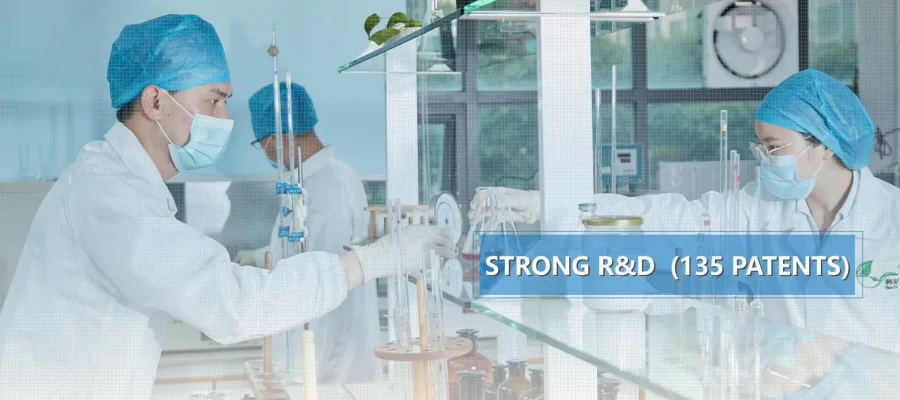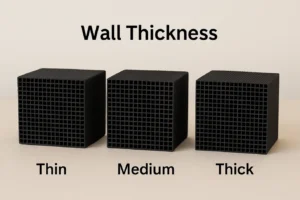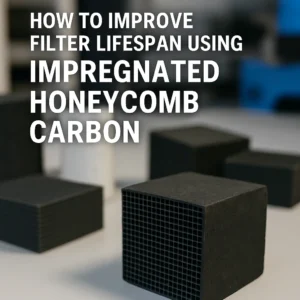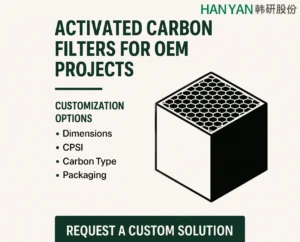Table of Contents
- 1. Introduction
- 2. Understanding Iodine Value and Its Implications
- 3. Key Metrics for VOC Adsorption
- 3.1 Carbon Tetrachloride Adsorption Value (CTC Value)
- 3.2 Methylene Blue Adsorption Value
- 4. Matching Activated Carbon to Specific Needs
- 5. Optimizing VOC Adsorption
- 6. Comprehensive Selection for Best Results
- 7. Conclusion
Introduction
Activated carbon is a versatile adsorbent widely employed in environmental applications, particularly for capturing volatile organic compounds (VOCs). While iodine value is a commonly used metric to assess activated carbon’s performance, it’s essential to consider other factors to ensure optimal adsorption efficiency. This article explores the key metrics influencing activated carbon’s VOC adsorption capabilities and provides insights into selecting the right carbon for specific applications.
Understanding Iodine Value and Its Limitations
Iodine value measures the amount of iodine adsorbed by a specific weight of activated carbon. It primarily reflects the carbon’s ability to adsorb small molecules, making it suitable for applications like water treatment and decolorization. However, it may not accurately predict the adsorption capacity for larger VOC molecules.
- 1. Primary Use: Water purification, removing organic pollutants.
- 2. Advantages: High efficiency in liquid-phase applications.
However, relying solely on iodine value can be misleading for gas-phase adsorption or large molecule applications.
Key Metrics for VOC Adsorption
To ensure effective VOC removal, consider the following metrics:
– Carbon Tetrachloride Adsorption Value (CTC Value)
- ·Definition: Indicates the ability to adsorb organic vapors.
- ·Application: Ideal for air purification and VOC emissions control.
- ·Importance: High CTC values correlate with better gas adsorption, essential for VOCs like benzene and toluene.
– Methylene Blue Adsorption Value
- ·Definition: Measures adsorption of larger molecules, such as dyes and pigments, often used for decolorization.
- ·Application: Common in food, pharmaceutical, and dye industries.
- ·Importance: High methylene blue values are vital for processes requiring removal of large organic molecules or colorants.
Matching Activated Carbon to Specific Needs
The optimal choice of activated carbon depends on various factors:
- 1. VOC Molecular Weight: Larger molecules may require carbons with a higher CTC value.
- 2. Pore Size Distribution: The carbon’s pore structure should match the size of the target VOC molecules.
- 3. Operating Conditions: Factors like temperature, humidity, and gas flow rate can influence adsorption capacity.
| Application | Best Indicator | Why? |
|---|---|---|
| Water Treatment | High iodine value | Effective for small organic molecule adsorption. |
| VOC Gas Adsorption | High CTC value | Mesoporous/macroporous structure suits larger gas-phase molecules. |
| Decolorization | High methylene blue adsorption | Targets large organic molecules for effective color removal. |
Therefore, choosing the right activated carbon depends on the specific contaminants and the operating conditions of the application.
Optimizing VOC Adsorption
To maximize VOC removal efficiency, consider these strategies:
- 1. Carbon Selection: Choose a carbon with a suitable pore size distribution and high CTC value.
- 2. Process Optimization: Adjust operating conditions to optimize adsorption kinetics.
- 3. Regeneration: Implement effective regeneration techniques to extend the carbon’s lifespan.
Conclusion
While iodine value provides valuable insights, it’s essential to consider a broader range of metrics to select the most appropriate activated carbon for VOC adsorption. By carefully evaluating factors like CTC value, pore size distribution, and operating conditions, industries can ensure optimal performance and minimize environmental impact. As technology advances, continued research and development will further refine the selection and application of activated carbon for VOC control. HANYAN supply high CTC 75% honeycomb activated carbon for VOCs treatment.
Keywords: activated carbon, VOC adsorption, iodine value, CTC value, methylene blue value, air purification, water treatment, environmental remediation, sustainable technology, industrial emissions, pollution control.




